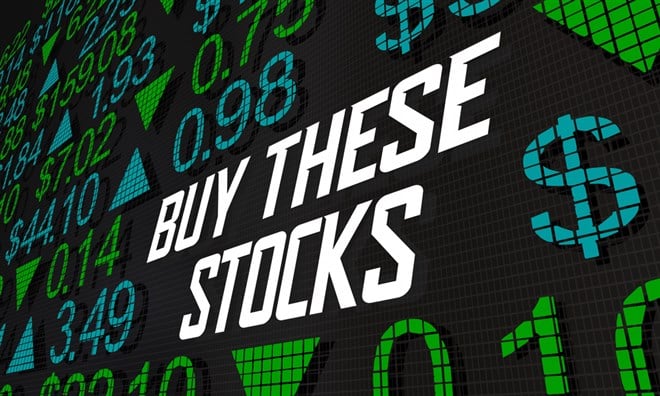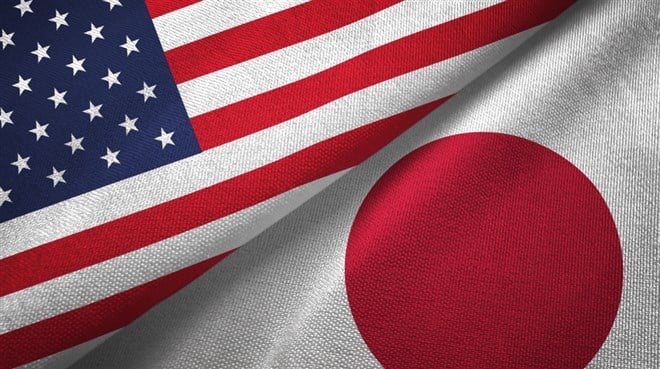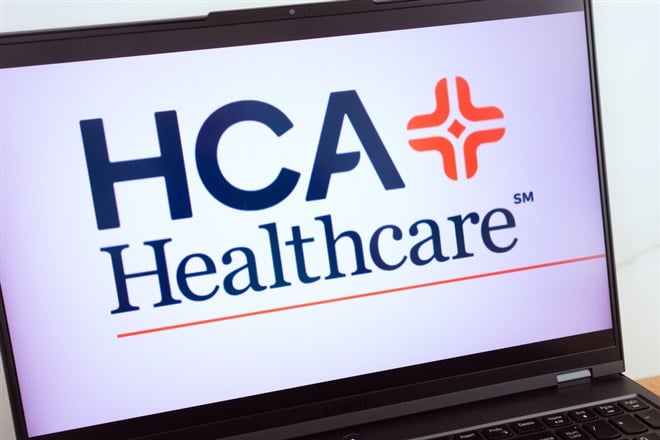Ticker Reports for July 29th
Act Fast: These 3 Undervalued Stocks Won't Stay Low for Long
With new all-time high valuations for the S&P 500 and Nasdaq-100 in full swing, more and more investors are growing wary of buying new names for their portfolios, and for good reason. Buying near the top of the valuation cycle is always a scary thing.
Still, several names haven’t caught up to this optimism today, providing some of the most attractive discounts in the market.
This is where being a shrewd investor comes in handy; instead of focusing on the hyped-up names in the stock market, it's better to concentrate on the best fundamentals that trade at a discount. With this in mind, discounts can be interchangeable between price action and traditional valuation multiples, as long as investors can rectify the underlying story for higher prices.
Chances are, portfolios that carry discounted names like XPeng Inc. (NYSE: XPEV), Intel Co. (NASDAQ: INTC), and even Albemarle Corp. (NYSE: ALB) will see their equity curves enjoy a path that goes up and to the right. Although this ride may not be the smoothest, it is likely to outperform the curve of others who buy the hyped names trading at all-time highs today.
XPeng’s Quiet Tailwinds Lie in Earnings Growth
Most investors are afraid of putting their money to work overseas, most of all in Chinese stocks. However, there are a few reasons to believe that China’s stock market could outperform the S&P 500 over the next few years, as valuation gaps directly contradict the earnings per share (EPS) growth that the two countries are set to deliver.
This is where XPeng stock becomes attractive, trading at only 70% of its 52-week high. However, it is one of China’s leading suppliers in the automotive sector. Most electric vehicles (EVs) in China, which is where most of the EV growth is happening, look to XPeng for parts and other services, making it a hot name to consider today.
More than being an industry leader in one of the fastest-growing economies and markets, today’s price does not reflect where future EPS could be for XPeng at all. According to Wall Street analysts, this company could report up to $0.30 in EPS over the next 12 months, a massive jump from today’s net loss of $0.10.
This outlook might explain why Morgan Stanley analyst Tim Hsaio decided to reiterate his Overweight rating on XPeng stock, this time also boosting its fair valuation target to $28 per share. Now, investors are talking about a potential rally of as much as 47% from where the stock trades today.
Institutions Love Intel’s Dip
Following Intel's new management team's decision to prioritize cost control over growth, the market punished the stock with a 9% selloff in the last week of July 2025. However, cutting costs is precisely what some institutions wanted to see out of Intel.
With President Trump announcing America’s A.I. Action Plan, it is clearer than it has ever been that capital will now rotate to chipmakers that have a significant footprint in manufacturing within the United States. This is where Intel lands way ahead of everyone else in the peer group, since it has been building out factories in Ohio and Arizona since 2022.
By the time Intel’s competitors reach this level of manufacturing exposure, markets are likely to realize that the investment and political advantages are greater when investing in the early leader, which is Intel. As the stock trades at only 66% of its 52-week high, it has recently become a prime candidate for big buyers.
Buyers such as the Aberdeen Group boosted their holdings in Intel stock by 8.4% as of late July 2025, bringing their entire position to a high of $90.9 million to make them one of Intel’s largest institutional holders. This gives every other investor a new vote of confidence in this company’s upside.
Short Sellers Run From Albemarle Stock
This lithium and rare earth metals player is going to be one of the hottest stocks in the coming years. As the United States prepares to negotiate further with China and Europe regarding rare earth metals used in energy production and storage, Albemarle could become the next big jump for the basic materials sector.
Seeing that the future is brighter for the bulls, and now that the stock trades at only 64% of its 52-week high, some of the short sellers in this name decided to leave their convictions in the dust. That’s where investors can notice a decline of up to 7.4% in Albemarle’s short interest over the past month alone.
Not to mention, there is also a renewed level of institutional buying interest. As of mid-July 2025, PGGM Investments has decided to build up a new stake worth $67.1 million, and, similar to Intel, this position makes PGGM the largest institutional holder. The fact that they are one of the most recent ones also plays into the optimistic timing for this company.
Elon's BIGGEST warning yet?
Elon's BIGGEST warning yet?
3 Automakers to Buy on U.S.-Japan Trade Deal—Not Who You Expect
The United States and Japan reached a new trade agreement last week. While the announcement was light on details, the market-moving information included a 15% tariff rate on Japanese imports into the U.S. Japanese car manufacturers rallied swiftly on the news, as the 15% rate is far less punitive than the 27.5% rate that was scheduled to take effect on August 1.
A 15% tax is still the highest that companies importing from Japan have paid in many decades, but markets have seemingly priced out the worst-case scenario. One area of the market that didn’t rally? The stocks of U.S. automakers, whose leaders haven’t exactly praised the new agreement.
Today, we’ll look at why the Big Three in Detroit could suffer under the current framework and discuss three Japanese car stocks that have surged since the announcement.
Why U.S. Manufacturers Hate the U.S.-Japan Trade Deal
Market indices popped on the news, but the deal wasn’t exactly well-received by everyone in the U.S. The American Automotive Policy Council, which represents legacy American automakers like Ford Motor Co. (NYSE: F) and General Motors Co. (NYSE: GM), harshly rebuked the deal.
Spokesman Matt Blunt lived up to his namesake by commenting, “Any deal that charges a lower tariff for Japanese imports with virtually no U.S. content than the tariff imposed on North American-built vehicles with high U.S. content is a bad deal for U.S. industry”.
Big Three automakers with significant production in Canada and Mexico could face higher import levies on vehicles compared to similar Japanese models manufactured entirely in Japan.
Additionally, the ‘opening’ of the Japanese auto market to American cars is likely to be a disappointment, as narrow streets and consumer preferences for smaller, more efficient cars have limited the success of Big Three vehicles in Japan.
Japan is a right-side-driving nation, and American companies would need to build up supply chains to support right-side-driving vehicles. These factors have made it challenging for U.S. auto companies to establish a foothold in Japan, so Ford withdrew from the market in 2016.
3 Japanese Automakers Rising on New Trade Deal
U.S. automakers are unhappy, but their counterparts across the Pacific are enjoying a rally, with shares of some Japanese manufacturers jumping more than 10% last week. The new deal makes imports more expensive, but these three companies are best positioned to protect their bottom lines.
Honda Motors: Poor Earnings Present Buying Opportunity
Honda Motor Co., Ltd. (NYSE: HMC) is one of the few car manufacturers enjoying a strong start to 2025, with shares up nearly 16% year-to-date. Honda has most of its manufacturing facilities in the U.S. and Japan, which gives it a leg up on other carmakers facing higher tariffs routing parts and assembly through Canada or Mexico. Tariff relief is crucial for Honda, which lacks the margins of Toyota or Subaru to absorb hefty tariffs. During its Q4 earnings report in May, the company anticipated net profits of Japanese yen (JPY) 250 billion (approximately $1.6 billion) for the fiscal year ending March 2026, after factoring in tariff impacts, and reduced operating profit expectations by 59%.
However, this miss could be a buying opportunity now that tariffs have become more manageable and the stock trades above its 50-day and 200-day moving averages.
Subaru: Analyst Upgrade Points to Improving Business
One of the first things analysts at Goldman Sachs did following the trade deal announcement was to upgrade shares of Subaru Corp. (OTCMKTS: FUJHY) from a Neutral rating to a Buy recommendation. Subaru has been aggressive in its tariff mitigation strategy. It has already instituted 4-5% price raises on most models, banking on its strong brand recognition and customer loyalty to limit pushback.
Preparing for the worst has put Subaru in a favorable position, as it can now protect its margins without resorting to additional price hikes.
The company reports earnings again in early August, and now that tariffs have settled lower, investors will pay close attention to any guidance revisions.
Toyota: Relief Rally Ignites as the Worst Is Avoided
No one breathed a bigger sigh of (tariff) relief than the executives at Toyota Motor Corp. (NYSE: TM), who were staring down a significant margin blow as more than 2.4 million Toyotas were sold in the U.S. alone last year. Toyota has a substantial manufacturing presence throughout the U.S., Canada, and Mexico, which puts some models in the crosshairs of tariffs as low as 0% but as high as 25% (pending any new agreement with Canada or Mexico).
However, Toyota has avoided the worst-case scenario, and its stock rallied more than 10% last week after spending the first half of 2025 in the red. Toyota had been anticipating its operating income to drop to JPY 3.8 trillion ($25.5 billion) for the fiscal year ending March 2026, after paying tariffs totaling JPY 180 billion ($1.2 billion) in April and May of this year.
The firm’s next earnings report is scheduled for July 30, and the tone is likely to be more upbeat, as the impact of tariffs has been mitigated and the company’s EV division continues to grow sales at a clip exceeding 40%.
Everyone's watching Nvidia right now. Here's why I'm excited.
Everyone's watching Nvidia right now. Here's why I'm excited.
Can HCA Healthcare Revive the Market's Weakest Sector?
The healthcare sector has experienced a 0.79% decline year-to-date, making it the worst performer among the S&P 500’s 11 sectors and the only one in negative territory. But unlike other market-lagging sectors that have performed better of late (e.g., consumer discretionary), healthcare isn’t just the worst-performing sector in 2025; it’s the worst-performing sector over the past three months.
The dramatic losses experienced by companies like UnitedHealth Group (NYSE: UNH), which has lost more than 44% YTD, have been well-publicized. But one company operating in that sector hasn’t only avoided the pain; its 14% gain has outperformed the market. Based on its recent earnings call, Nashville-based HCA Healthcare (NYSE: HCA) is providing forward guidance that the rest of the industry hopes will be a rising tide that lifts all boats.
Why Healthcare Is Struggling in 2025
Over the past several years, healthcare companies’ financials have stagnated or weakened. That’s been felt particularly by the healthcare services vertical. Despite national healthcare expenditures in the United States rising from $3.756 trillion in 2019 to 5.049 trillion in 2024—or 34.42%—EBITDA for the companies operating in the healthcare services space saw a compound annual growth rate (CAGR) of just 8.5% over the same period.
An 8.5% compound annual growth rate (CAGR) isn’t alarming on its own—but in context, it reflects a shrinking share of overall U.S. healthcare spending. Several short-term headwinds are contributing to this, including persistent inflation, labor shortages, expensive tech infrastructure, and industry consolidation. Encouragingly, most healthcare leaders view these as temporary pressures. In fact, 25% of large healthcare service providers cite the current administration as their top concern, compared to 21% pointing to labor challenges and 19% citing inflation.
At the same time, the aforementioned issue of ongoing industry consolidation is concerning, but only to 2% of healthcare service providers with market caps above $2 billion. One large part of that is HCA Healthcare itself, which has acquired six companies in the past five years.
Why HCA Is the Leader of the Pack
HCA Healthcare is the largest healthcare system in the United States, and it didn’t achieve that status by accident. The company, which boasts a market cap of $81.56 billion, is a serial acquirer. When it went public in 1969, it owned and operated 11 hospitals. Since then, its focus has expanded from patient care to provider consolidation.
Today, HCA Healthcare owns 222 hospitals and more than 2,000 outpatient sites, including surgery centers, freestanding emergency rooms, urgent care centers, and physician clinics. Those facilities span 21 states and the United Kingdom. It leads the field with 41,194 beds—nearly two-thirds more than the U.S. Department of Veterans Affairs, the second-largest provider with 25,260 beds.
Scrutinizing top healthcare services providers’ net patient revenue more easily puts this into perspective. Last year, HCA raked in $55.715 from its patients. Second on that list is Chicago-based CommonSpirit Health, whose $29.482 billion in net patient revenue is more than 47% less than HCA’s.
From 2011 to 2024, HCA Healthcare acquired 23 companies, including six in 2017 alone. The company’s ability to scale via M&A while retaining an emphasis on provider services is unparalleled and has resulted in a stellar financial performance. That’s particularly evident when looking at HCA’s free cash flow over the past few years, which has increased 36.63% from $4.127 in 2022 to $5.639 in 2024.
Q2 Earnings and Forward Guidance Scream Buy
When the company reported Q2 results on July 25, they announced EPS of $6.84 versus expectations of $6.20 and revenues of $18.61 billion versus expectations of $18.49 billion—good for gains of 24.4% and 6.4%, respectively, over the year-ago quarter. The end result? The healthcare giant’s sixth consecutive quarterly beat, alongside net income increasing 13.1% to $1.653 billion.
Shareholders have every reason to expect HCA to continue bucking the healthcare sector’s lackluster performance in 2025. The company’s trailing annualized EPS stands at $23.79, good for an attractive price-to-earnings (P/E) ratio of 14.23. Next year, HCA forecasts EPS to grow 12.21% to $28.03.
All of that culminates in a consensus Moderate Buy rating. Nine of 18 analysts covering HCA assign it a Buy rating, and nine assign it a Hold. The stock’s average 12-month price target is $396.46, representing 16.56% potential upside from today’s share price.
HCA Healthcare pays a modest dividend currently yielding 0.85%, or $2.88 annually per share. But the company has increased its payout for six consecutive years, and its incredibly low dividend payout ratio of 12.11% indicates that HCA is rewarding shareholders while reinvesting capital for future growth.
He Called Nvidia at $1.10. Now, He Says THIS Stock Will…
He Called Nvidia at $1.10. Now, He Says THIS Stock Will…






